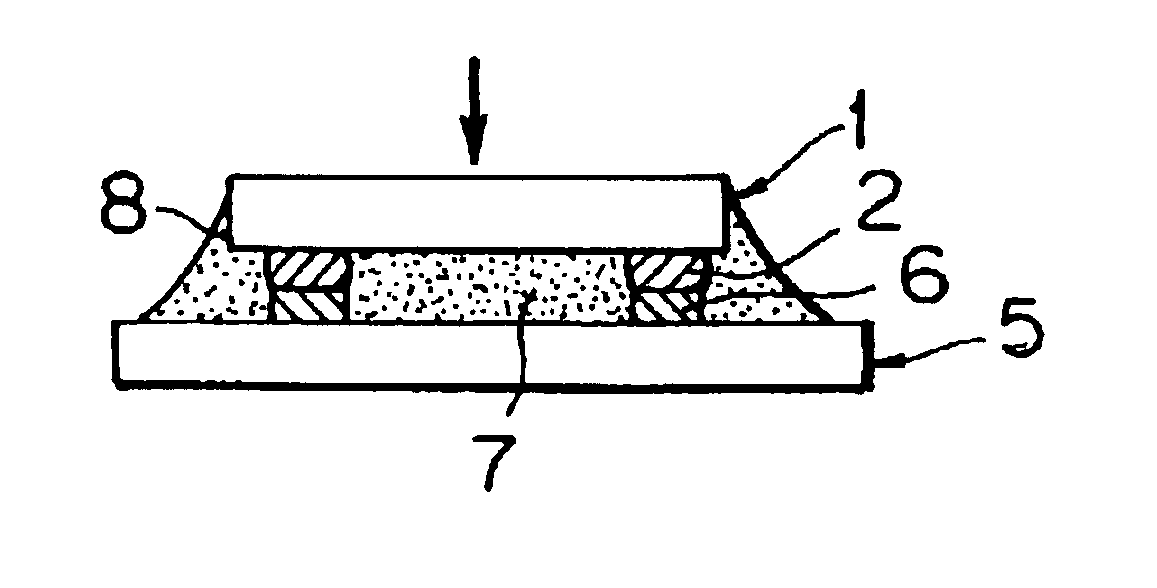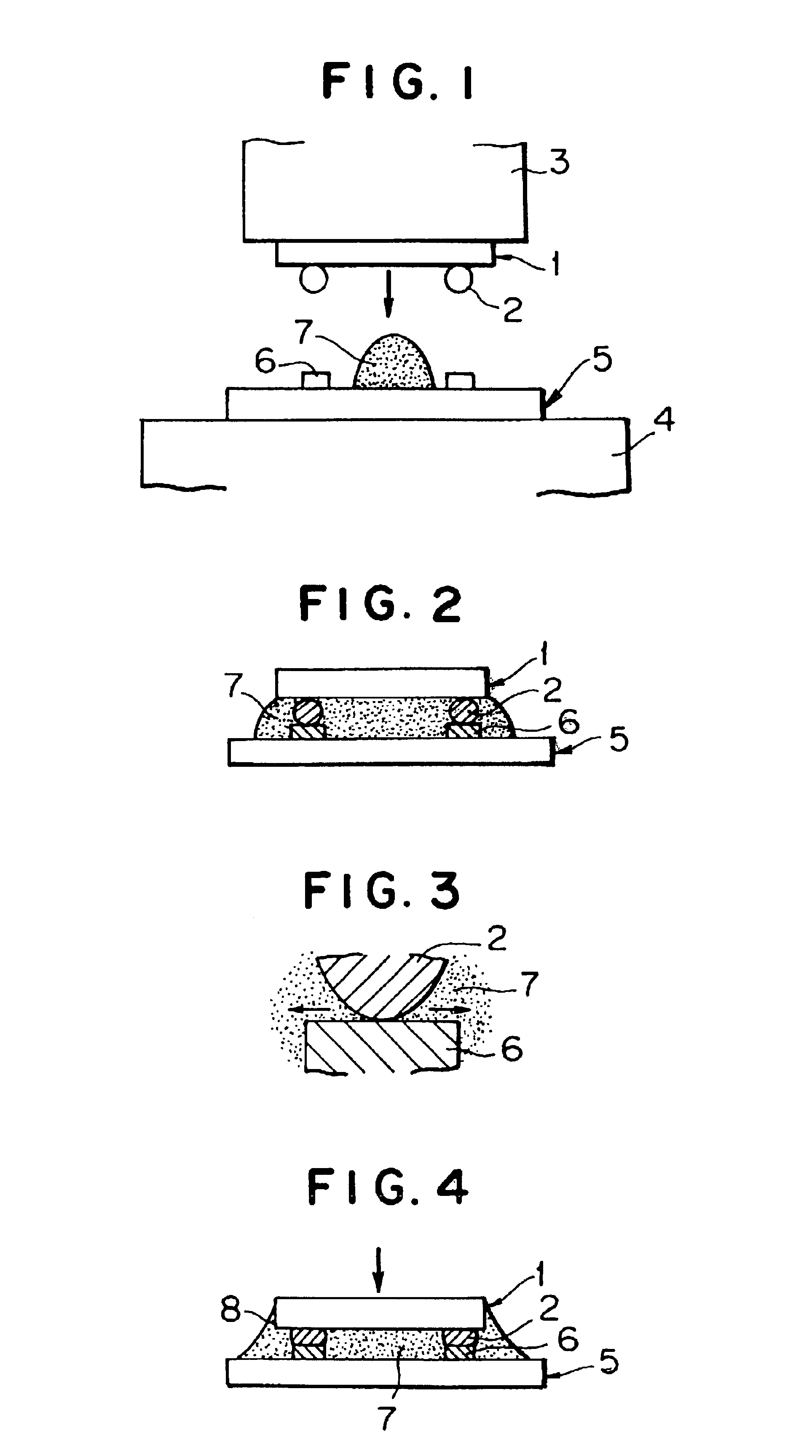Chip mounting method
a chip and mounting method technology, applied in the field of chip mounting methods, can solve the problems of reducing the reliability of electrical bonding between the bump and the electrode of the substrate, and affecting the reliability of the electrical bonding
- Summary
- Abstract
- Description
- Claims
- Application Information
AI Technical Summary
Benefits of technology
Problems solved by technology
Method used
Image
Examples
Embodiment Construction
Hereinafter, desirable embodiments of the present invention will be explained referring to figures.
FIG. 1 shows a state immediately before chip mounting in a chip mounting method according to an embodiment of the present invention, and shows a case where bumps are formed on the chip side and electrodes are formed on the substrate side. In FIG. 1, numeral 1 shows a chip (for example, an IC chip), and at positions corresponding to the positions of electrodes (not shown) provided on the lower surface of the chip, bumps 2 (in this embodiment, solder bumps) are formed. Chip 1 is held by suction on the lower surface of a heat tool 3 of a chip bonding machine. In this embodiment, a primary oxidation preventing treatment such as the aforementioned treatment is performed to the surfaces of at least one of bumps 2 and electrodes of a substrate, and the solder bonding can be carried out without applying a flux.
As the primary oxidation preventing treatment for bumps 2 or the electrodes, the afo...
PUM
| Property | Measurement | Unit |
|---|---|---|
| total bonding strength | aaaaa | aaaaa |
| speed | aaaaa | aaaaa |
| melting point | aaaaa | aaaaa |
Abstract
Description
Claims
Application Information
 Login to View More
Login to View More - R&D
- Intellectual Property
- Life Sciences
- Materials
- Tech Scout
- Unparalleled Data Quality
- Higher Quality Content
- 60% Fewer Hallucinations
Browse by: Latest US Patents, China's latest patents, Technical Efficacy Thesaurus, Application Domain, Technology Topic, Popular Technical Reports.
© 2025 PatSnap. All rights reserved.Legal|Privacy policy|Modern Slavery Act Transparency Statement|Sitemap|About US| Contact US: help@patsnap.com


